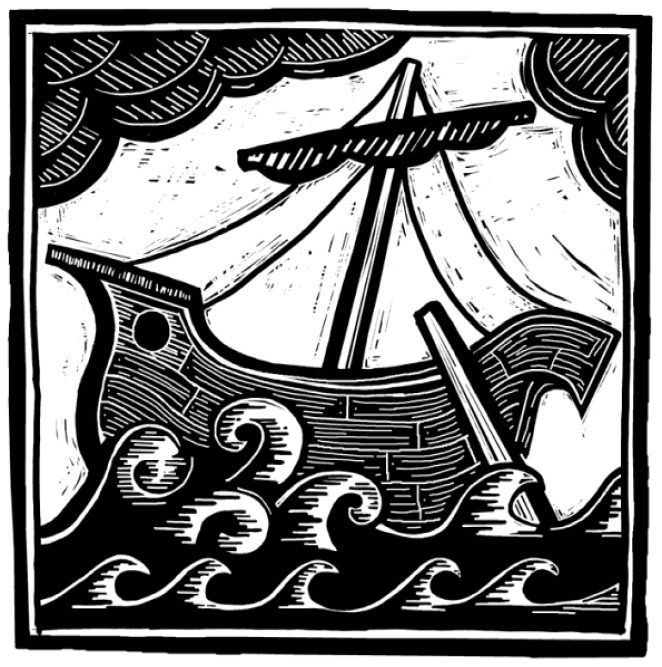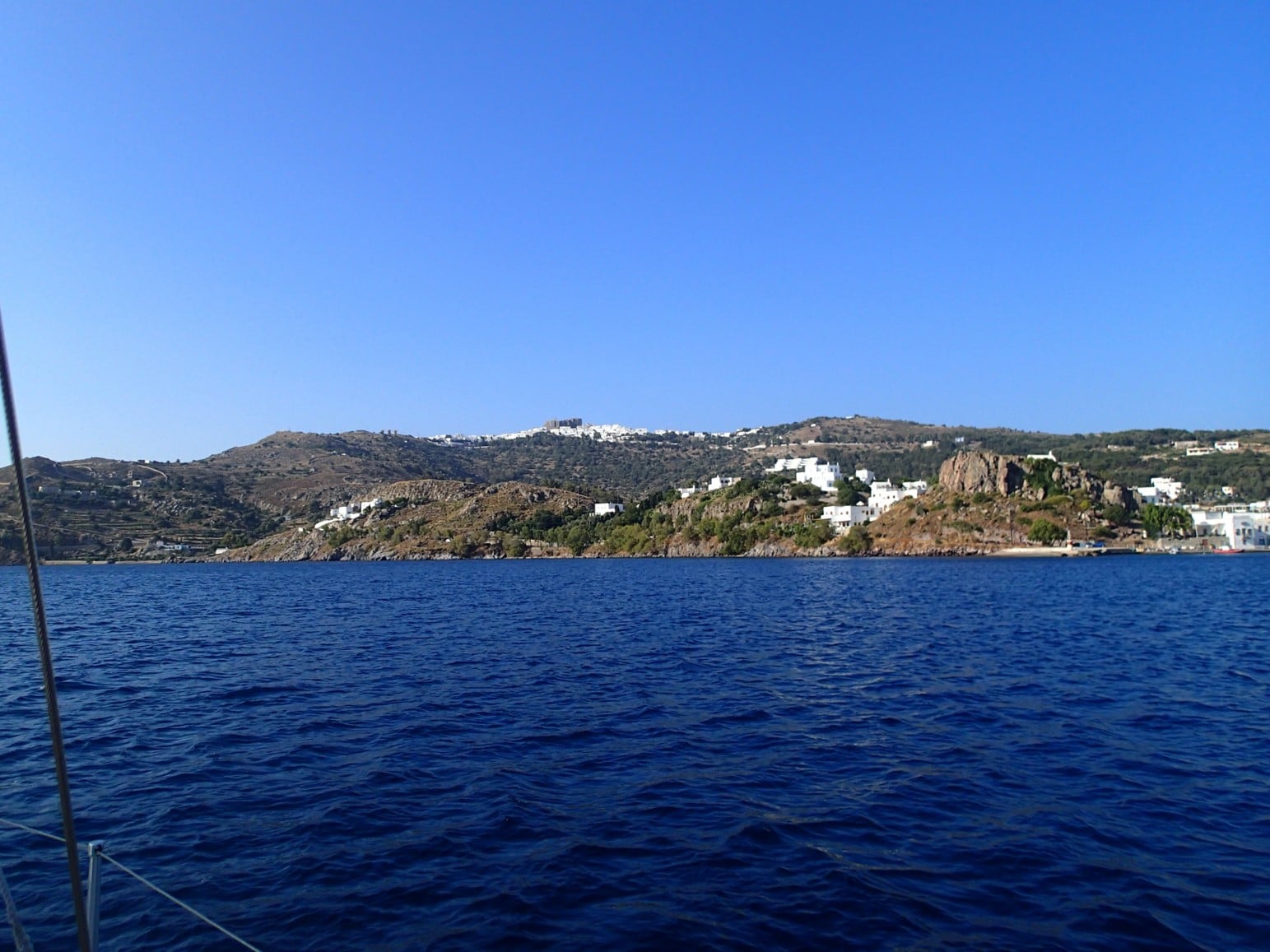Paul spent years in Roman prisons. I am in a roamin’ prison, a sailboat that has such luxuries like fans to keep to keep cool, running water, a little galley and refrigerator, and best of all, no Roman soldier sharing the cramped space.
As part of my quest to live in the world of Paul this fall, I’ve been watching HBO’s Rome series, AND reading Romans, especially the first chapter, at the same time, each episode. There are many characters in the series who were like the people Paul lived with very, very closely in the Empire’s port cities, road side accommodations, ships, and prisons. It was the characters in Rome Paul knew well enough to describe in Romans.
Watching Rome and reading Romans, makes one thing clear about Roman soldiers: I would not to be chained to one. How did Paul survive emotionally, spiritually, even physically under the conditions of not just being alone, but worse, with Roman soldiers ? Or did Paul begin to enjoy being around pagans?
I’m getting acquainted, slowly, with some of my neighbors, mostly the old men of the sea who live alone on their boats. “My wife is coming next month,” the old Swedish sailor across the wharf told me yesterday. Looking at his boat, I’m not sure whether I believe him. Is there any wife anywhere that would voluntarily move in with someone who lives on this? But after a few short conversations, I discover that I enjoy being around him, and will not be surprised if he turns out to be a professor of religion or something.
I’m getting acquainted with Paul in new ways as well. As William Ramsey wrote back in 1895 in Saint Paul the Traveler and Roman Citizen, “There are many cases in which, to catch . . . [the] meaning properly, you must imagine yourself standing with Paul on the deck of a ship . . . ” (2). Or on board with him in Finike.
The icon of P aul that Janet and I hung in the cabin of SailingActs in 2004, is still there. I find myself looking at this icon far more than ever before. Jerry Holsopple, my colleague at EMU who writes (paints) authentic icons, could likely explain why and how an icon makes a saint’s presence felt, but in the absence of the of physical people to encourage and inspire, the icon Paul becomes a kind of companion. Does this make sense to anyone else? I think Paul’s vision of Jesus on the road to Damascus, was his icon.
aul that Janet and I hung in the cabin of SailingActs in 2004, is still there. I find myself looking at this icon far more than ever before. Jerry Holsopple, my colleague at EMU who writes (paints) authentic icons, could likely explain why and how an icon makes a saint’s presence felt, but in the absence of the of physical people to encourage and inspire, the icon Paul becomes a kind of companion. Does this make sense to anyone else? I think Paul’s vision of Jesus on the road to Damascus, was his icon.
 I spent a lot of time this week at the chart table with Ports of Paul research materials: a chart of the Turkish coastline, Acts, my ship’s log from 2004-2012, and navigational tools for measuring distances and plotting courses. One of the main things I’m realizing, as Paul likely did in prison, is that making new discoveries and developing and writing new ideas and insights about the life of someone like Paul, is one of the ways that prison becomes a unique time of blessing. Speaking of blessing and reward, let me share a couple of recent ones. Life is beautiful.
I spent a lot of time this week at the chart table with Ports of Paul research materials: a chart of the Turkish coastline, Acts, my ship’s log from 2004-2012, and navigational tools for measuring distances and plotting courses. One of the main things I’m realizing, as Paul likely did in prison, is that making new discoveries and developing and writing new ideas and insights about the life of someone like Paul, is one of the ways that prison becomes a unique time of blessing. Speaking of blessing and reward, let me share a couple of recent ones. Life is beautiful.
Left: moonrise over Finike Bay, into which Paul almost certainly sailed.
Center: Moonrise over Finike marina.
Last week I asked for estimates on how much of Paul’s life was spent in port cities. I’ve been combing the evidence in Scripture, scholarly materials, and my own ships logs and experience on the Mediterranean. I’m not finished, but the following graphic provides what I think must be pretty close.
I was amazed to discover that almost 2/3 of Paul’s life that we know about, was spent in seaports of the Mediterranean. The question is: Why is this important? What difference does it make? Hint: think Rome and what you know or imaging about working seaports throughout history. Comments welcome.





My understanding of the importance and impact of seaports on one’s life and world view AND the Gospel continues to cause me to think new thoughts. Just last week I was part of a conversation when the question was asked: Why did that little Mennonite community in Denbeigh Virginia known as the “colony” birth so many leaders who have impacted the broader church? We noted that these folks had moved in from other areas to make a new life for them selves and were open to new things. Suddenly it hit me – that area was a seaport! Was that part of the dynamics of raising up leaders like the Brunks – including Ruth Brunk Stoltzfus – one of the first Mennonite women to be ordained – who had quite an impact in the life of the church? Many come to mind from Ralph Palmer to Norman Kraus!
Just curious, Linford . . . . How do you figure out how long Paul lived (even if it is possible to “guesstimate” how long his years of ministry were)? Is there any good clue anywhere that suggests how old he was when he encountered the Risen Jesus on the road to Damascus? That’s a question I have never actually considered . . . .
That’s a very interesting idea. I had never thought of that the location of that community might have been a key to the development of leadership.
There are lots of timelines out there developed by serious biblical scholars. The problem is, they vary some, on both the dating of Paul’s ministry, and of course dates for his birth and death. Paul’s birthdate is calculated anywhere between 2 A.D. to 8 A.D. and his death somewhere after 64 A.D. to about 68 A.D. These calculations are made from hints and connections to dates in history that Paul or Luke allude to. What I’m doing now is calculating the time necessary to travel on land and sea on all of Paul’s known journeys and voyages. I’m convinced that most estimates are substantially off when it comes to measuring travel times. Most biblical scholars rely on anecdotes from sailors or captains in antiquity to get an idea of how long it took to sail from point A to point B. My hunch is that they only record the time it took when they either a) made exceptionally good time, or b) made terrible time. The problem is, there are no reliable records for averages. I’m using my own logs over a number of years to get my averages, as well as the record of unfavorable or no wind at all. What emerges is far more time spent traveling than most estimates by landlubber biblical scholars.
If Paul spent the majority of his life in sea ports he undoubtedly would have had a very unique perspective into other cultures. There would have been the culture of the given port, but also the cultural of traders and seamen, as well as all of the individual cultures of each boat and crew. Paul would have had the unique experience to learn first had many different cultures and religions and thus have a better frame for interacting with these people in terms of sharing the gospel. Here in Southern Chile in the city of Puerto Montt at the port there is always the opportunity to meet any number of people from many different cultures and backgrounds. One thing almost all of the sailors have in common is that they are a very superstitious people. From my experience superstitious people are often looking for truth. Paul having answers would have been in a great position to share the gospel with many people from all over the world all in the same location. Thus the gospel of Jesus would grow rapidly.
I’m so enjoying your posts! It makes it so much more interesting to have actually been in Finike, on Sailing Acts, and to have developed a new, and surprising, appreciation for Paul, after our time with you!
Amen to what June said. The Way of the Pilgrim may help answer the icon question. It takes place in Russia but really explains the Eastern Orthodox world view. It isn’t about icons in particular but it is about devotion, praying without ceasing, and moving the mind into the heart on pilgrimage.